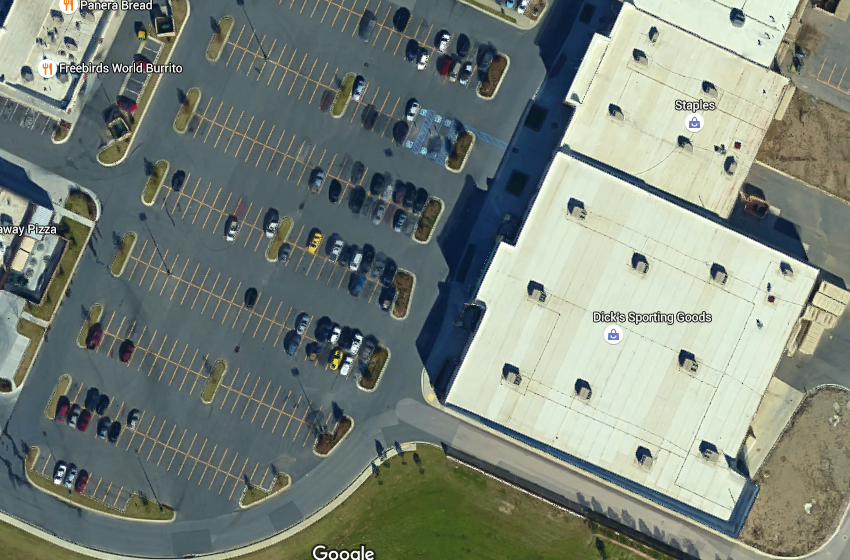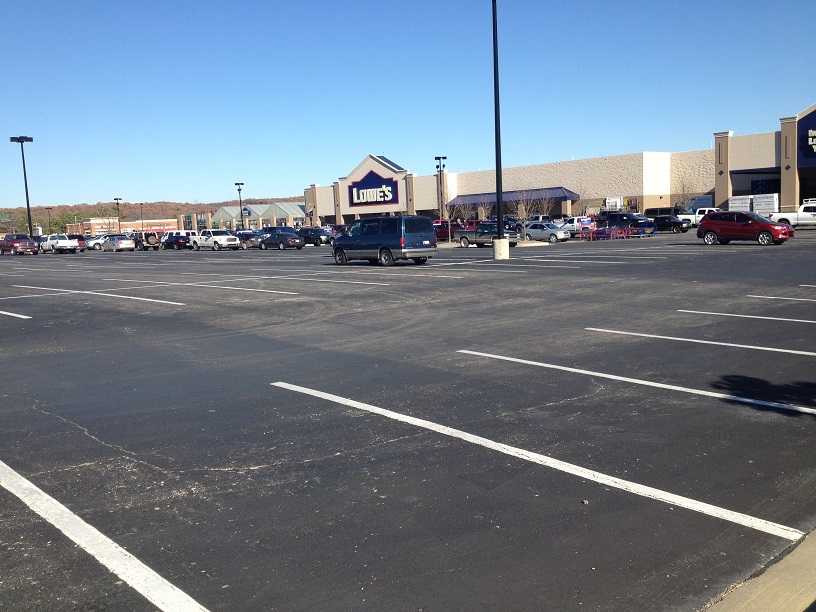Back when I was a kid, we didn’t have Black Friday. We had after-Christmas specials. (At our house, the day after Thanksgiving was reserved for turkey tetrazzini and leftover pie.) The preferred shopping day for thrifty folks like my mom was the day after Christmas. A child of the Depression, she never met a 75% discount that she didn’t like. As a result, many of our Christmas gifts were purchased 364 days in advance, and squirrelled away until the following yuletide season.
I’m not sure exactly when the Black Friday craze began. Having never wrestled anyone to the ground for a Cabbage Patch Kid or fought to the death for a Gameboy, I’m pretty sure I missed out on the earliest incarnations of holiday shopping hysteria.
Even now, with all the media hype, I remain unconvinced that Black Friday actually exists.
We’re told that this is the “biggest shopping day of the year”—yet parking lots across the country tell a different story. Last year, I set out to explore #BlackFridayParking at commercial shopping centers across Tulsa to see for myself.
As I drove around town, the empty parking lots had me doubting Black Friday almost as much as I doubt the fat man in the red suit himself. Further research was needed. I was actually going to have to go shopping on Black Friday. (If you’re like me, the day you realize you can buy your favorite brand of underwear online is the day you celebrate never having to step inside a department store ever again. I really hate shopping.)
I headed to Tulsa Hills, one of our newest and most popular shopping centers, to check out the Black Friday madness. It was early afternoon and Dicks Sporting Goods was doing a brisk business, so—like Jane Goodall plunging into the Tanzanian jungle—I stepped through the automatic sliding glass doors to study Americans in their native habitat: the aisles of a big box store.
It was definitely crowded. The aisles were full of people browsing for everything from basketballs to badminton sets. Treadmills were being tested. Folks stood in line, arms loaded with yoga mats and sweatpants, waiting for cashiers. This was clearly no ordinary shopping day.
Visits to other stores yielded similar results. So yes, Virginia, there really is a Black Friday. But if this is truly the busiest shopping day of the year, why aren’t the parking lots full?
For years, we’ve been told that parking lots need to be large enough to accommodate peak parking demand. Sure, they’re not full on any given Tuesday, but we really need them on those big shopping days! (Or so the developers claim, as they tear down residential housing for commercial parking spaces that will never be used.)
On Black Friday, the Dick’s Sporting Goods store I visited had 155 empty parking spaces in their 261 space parking lot. This means that, on what is purported to be the busiest shopping day of the year, 62% of the available parking spaces were vacant.
Dick’s was not alone. Everywhere I went, I found oceans of empty asphalt, despite crowds of eager shoppers bustling inside the stores.
So what’s up with that?
My initial thought was to blame our local zoning ordinance for its high parking minimums. And while this is certainly a factor, it doesn’t appear to be the actual cause. As it turns out, national chains have their own development standards, which often far exceed local zoning requirements.
In Tulsa’s recently updated zoning code, parking requirements received a makeover. A retail store in a commercial shopping district is required to provide a minimum of 2.5 or 3.33 spaces per 1,000 SF of building. (The lower number is for CH and Mixed-Use zoning, which includes many of our older/historic “main streets.” In these areas, the first 5,000 SF of building space is exempt from parking requirements. Downtown has no parking requirements whatsoever.) While Donald Shoup would correctly argue that these requirements are both precise and wrong, they are a big improvement over our previous zoning code that required even more parking and treated every neighborhood like a 70’s suburb.
Here’s the rub. Many national retailers require around 5 parking spaces per 1,000 SF of building size. This is true of national chains as diverse as REI and PETCO, and it appears to be the case for Dick’s Sporting Goods, which has 261 parking spaces serving its 50,220 SF building.
Since every parking space takes up about 300 SF of land (once you factor in driveways and aisles), this means that every 50,000 SF of building area is accompanied by over 75,000 SF of asphalt.
And on Black Friday, when the parking lot at Dick’s was 60% vacant, it means that 46,500 SF of space—an area nearly as large as the store itself—sat empty.
That’s a lot of space to waste on the “busiest shopping day of the year.” But it’s nothing compared to a “normal” shopping day, which looks something like this:

Why do I care? Because all that wasted space means we’re building and maintaining a lot more public infrastructure than we need. If you’ve been following the Strong Towns movement, it makes you think. When every destination is bloated by excessive parking, cities must provide and maintain additional miles of roadway, and manage more water, sewer and stormwater lines than they otherwise would. At the same time, we receive fewer tax dollars per acre of land within our city limits because of the poor use of space. It’s an inefficient system that hits municipalities–and taxpayers–directly in the pocketbook.
All this just because a bunch of national chains want twice as much parking as they need on the busiest shopping day of the year.
Maybe it’s time we started paying closer attention to the math.
By Sarah Kobos



I think you meant 364 days, rather than 374…
Very nice!